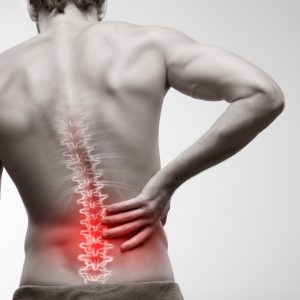
Spinal facet joint pain is discomfort in the joint between two vertebrae within the spinal column. Also known as osteoarthritis, facet joint syndrome makes it painful to twist and bend at the back. Facet joint syndrome also commonly leads to pain along the cervical region, meaning the area of the neck.
Patients saddled by this condition often have to turn their body to look to the side. Some spinal facet joint pain sufferers also find it difficult to emerge from chairs, stand upright and straighten their back.
Pain along the facet joints also minimizes flexibility as the cartilage between the joints permits the vertebrae to move against one another without friction is compromised. Synovial fluid is present between the joints, providing essential protection against gradual wear and subsequent pain.
Spinal facet joint pain is diagnosed through a physical examination along with an evaluation of the patient’s medical history. The medical physician might recommend a CT scan and/or X-ray to identify abnormalities in the spine. If necessary, a bone scan will be performed to analyze whether the joints are inflamed.
Spinal facet joint pain sufferers should know several treatment modalities are available to mitigate the pain. Though surgical treatment is an option, spinal injections and conservative treatments are also available. The treating doctor will explore all non-surgical treatment options before resorting to surgery.


Spinal facet joint syndrome has several causes. For one, excessive pressure can cause this unique joint pain. It is also possible that the aging process will lead to spinal facet joint pain. Sports injuries also have the potential to cause the pain.
Above all, pain is the most common symptom. To be more specific, back pain that becomes increasingly worse when twisting, bending or lifting items indicates spinal facet joint pain.
Pain in the back or neck that worsens when leaning back or forward is also a common spinal facet joint pain symptom.
Muscle weakness and numbness along the back and cervical region are signs of spinal facet joint syndrome. Furthermore, the inability to move the back or neck due to stiffness is a symptom of spinal facet joint pain.
The objective of treating spinal facet joint pain is to mitigate the pain to the level that the patient can function without significant discomfort and live a relatively normal life. The hope is that the pain relief and reduced stiffness will set the stage for the patient to live an active life.
Spinal facet joint pain treatment modalities are highlighted by NSAIDs, short for non-steroidal anti-inflammatory drugs. Examples of NSAIDs include ibuprofen, naproxen and aspirin. Such medications reduce inflammation and also minimize discomfort. Radiofrequency ablation is another treatment option. This form of treatment uses radiofrequency waves to zero in on nerves within the compromised facet joint so the nerve does not transmit pain to the brain.
Physiotherapy is used to help the patient improve movement and strength within the spine. The regaining of both strength and movement is accomplished with certain exercises. Anesthetic injections are also a treatment option. A doctor injects an anesthetic or pain reliever to the compromised joint to mitigate the pain.
Spinal surgery is a last resort for spinal facet joint pain sufferers. This surgical procedure, often referred to as a spinal fusion, fuses the compromised spinal bones to one another within the bone to reduce pain and prevent the damaged joints from moving and causing even more discomfort.